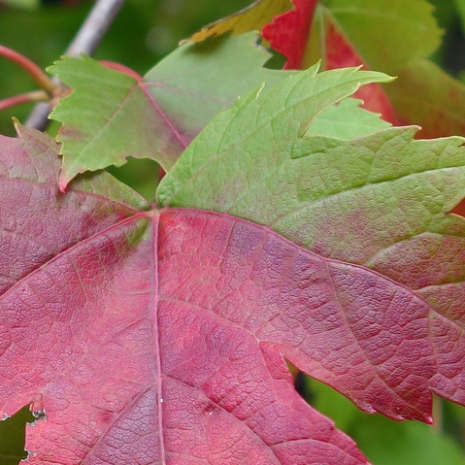The Marmo Maple also named Acer x freemanii is a hybrid specie. The silver maple and the red maple were chosen for their growth rate, habit, and autumn color. ‘Marmo’ is a columnar tree with orange-to-yellow autumn foliage.
Marmo is a fast-growing Freeman Maple with an oval to vase-shaped crown. The Morton Arboretum built it for the local climate. The undersides of the dark green leaves of this plant are silvery, and in the fall they change color from red to yellow. Once it is established, it can survive in dry conditions, clay, and moist soils. This variety is the Chicagoland Grows introduction.
This new fall release from Chicagoland Grows features a stunning array of autumn hues, ranging from a mottled combination of red and green to burgundy and yellow in its foliage. This hybrid combines the red maple’s strong branch attachment with the silver maple’s rapid growth rate. Cultivars are plants bred or vegetatively propagated from valuable wild species.
Marmo Maple Pros and Cons
The columnar and erect growth habit of the Marmo Maple is the primary reason for the tree’s significance in the landscapes. In the early spring, before the leaves appear, it is adorned with clusters of brilliant red blooms along its branches. Its deciduous foliage is forest-green. In the fall, the lobed leaves of this hybrid plant turn brilliant yellow, orange, and red. The brick-red branches and wrinkled gray bark give the environment an intriguing new dimension.
The Marmo Maple is a type of dense deciduous tree that features a prominent central leader, as well as a growth habit that is narrowly upright and columnar. Its typical texture blends into the landscape, but one or two finer trees or bushes can be used to balance it for a successful composition.
This Marmo Maple is a low-maintenance tree that needs to be pruned in the summer when the leaves have fully matured, as pruning in late winter or early spring can cause the sap to ‘bleed’. It lacks any significant negative qualities.
The use of Marmo Maple is advised for the following types of landscape projects:
- Shade
- Accent
‘Marmo’ establishes itself rapidly, developing over two feet in a single year. Its foliage is lovely not only in the fall, but also in the early spring when it has a reddish tint, and in the summer it matures into a deep green color with silvery undersides. Each leaf grows from a red petiole. ‘Marmo’ contains no seeds, unlike the silver maple. It grows strong and resists diseases and insects as a mature tree, unlike the silver maple, which has weak or damaged branches.
Marmo Maple Care
Marmo Maple is not planted underneath power lines because of its high canopy, which features a normal height of six feet from the ground. This tree, when fully grown, can have its lower branches pruned away to produce a canopy high enough for people to walk freely below. It develops swiftly and can live to 100 or more under perfect conditions.
It is recommended to plant this tree in full sunlight to partial shade. It is extremely versatile, favors average to wet growth circumstances, and can even survive some standing water. It has a very high tolerance for urban pollution and may even flourish in densely populated areas.
Marmo Maple Problems
Marmo Maples do not possess severe insect or disease issues. pests like leafhoppers and scale can cause serious damage to these young plants. Leafhoppers are small insects, roughly the size of a rice grain. They have piercing-sucking mouthparts and are tiny wedge-shaped flyers that are green, yellow, or brown. They eat plants by sucking the sap out of the leaves while at the same time releasing poison into the grass.
Scale damage can restrict plant growth, and create leaf drop, yellow or brown leaves, and dead leaves or stems. Scales can weaken plants and limit growth.



